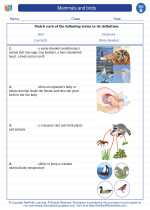What are Red Blood Cells?
Red blood cells, also known as erythrocytes, are the most common type of blood cell in the human body. Their primary function is to transport oxygen from the lungs to the body's tissues and carbon dioxide from the tissues back to the lungs for exhalation.
Structure of Red Blood Cells
Red blood cells are small, biconcave discs that are about 6-8 micrometers in diameter. They lack a nucleus and most organelles, allowing for more space to carry oxygen. Their unique shape increases the surface area for gas exchange and allows them to be flexible as they move through capillaries.
Production of Red Blood Cells
Red blood cells are produced in the bone marrow through a process called erythropoiesis. This process is regulated by the hormone erythropoietin, which is produced by the kidneys in response to low oxygen levels in the blood.
Function of Red Blood Cells
The primary function of red blood cells is to carry oxygen from the lungs to the body's tissues and organs, and to transport carbon dioxide from the tissues back to the lungs for exhalation. They accomplish this through the binding of oxygen to the protein hemoglobin, which is abundant in red blood cells.
Study Guide
.◂Science Worksheets and Study Guides Second Grade. Mammals and birds

 Activity Lesson
Activity Lesson
 Worksheet/Answer key
Worksheet/Answer key
 Worksheet/Answer key
Worksheet/Answer key
 Worksheet/Answer key
Worksheet/Answer key
 Worksheet/Answer key
Worksheet/Answer key
 Vocabulary/Answer key
Vocabulary/Answer key
